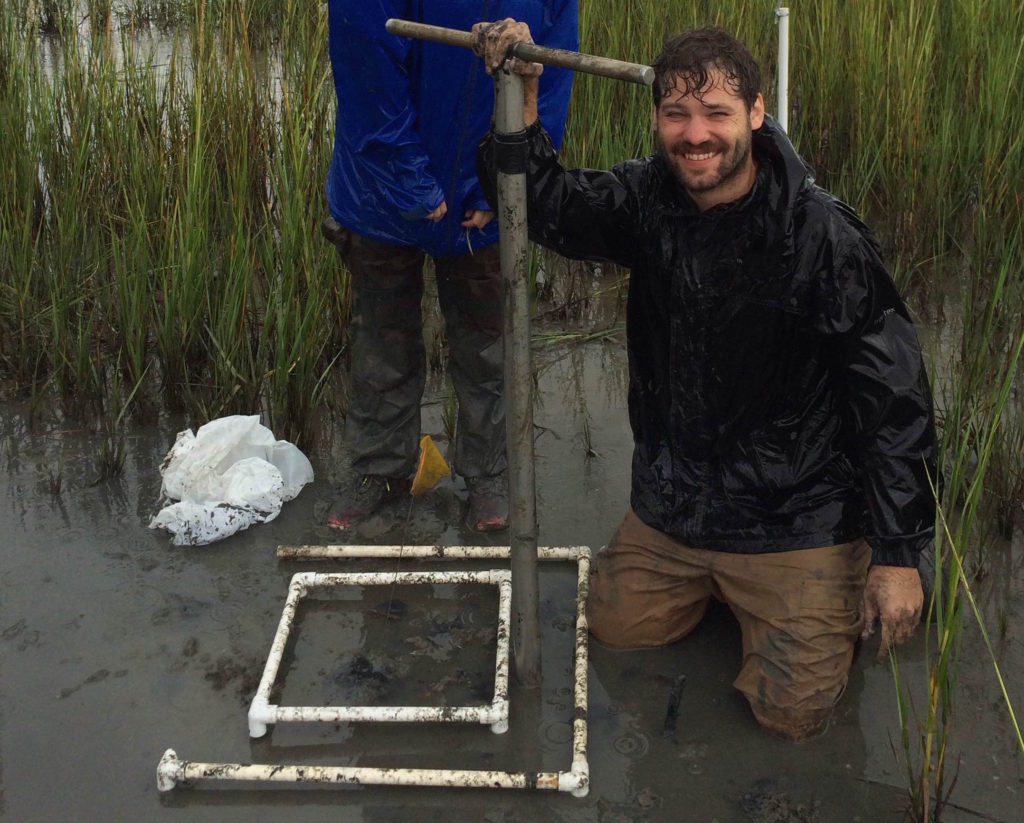
Ph.D. Candidate, University of Florida
Field Travel Grant Type 1
Recovery of southeastern US salt marshes from feral hog disturbance
“Salt marshes are intertidal grasslands that form along sheltered, temperate shorelines and provide a valuable suite of ecosystem services including protection from shoreline erosion, carbon sequestration and provision of critical habitat for wildlife including endangered shorebirds, commercially-harvested fishes, crustaceans and mollusks. In the southeastern Atlantic coast of the US, however, the capacity for salt marshes to maintain these services have been compromised in recent decades due to the widespread invasions of feral hogs. Through their foraging for roots and molluscs and wallowing activities, feral hogs are known to turn over salt marsh soils and leave expansive swathes of largely dead vegetation in their wake. Because decomposition of resulting dead plant material can lead to soil subsidence and, hence, loss of marsh elevation, rapid recovery of marsh-forming cordgrass (Spartina alterniflora) is essential to preventing hog-disturbed salt marshes from shifting permanently to open water habitats. Due to limited research on the physical and biological factors that control the rate and pattern of cordgrass re-colonization of hog-generated disturbances, our ability to effectively target management of this invasive species or restore salt marshes degraded by its activities remains limited. Here, I outline a two-tiered research program to investigate the effects of: 1) salt marsh soil parameters and resident invertebrates, and 2) the spatial distribution of remnant cordgrass patches on the expansion of cordgrass into hog-generated mudflats on small and large spatial scales, respectively.
To characterize the range of hog disturbance in the southeastern United States (here defined as the coast of Florida, Georgia and South Carolina), I will conduct a survey of the southeastern Atlantic coast to identify feral hog invasions within Spartina alterniflora marshes. To test the effect of different disturbance environments on cordgrass recovery at small-scales, I will choose four sites from the feral hog disturbance database that span a gradient in soil and resident invertebrate conditions and are standardized for elevation for experimental manipulation. To examine the effects of soil characteristics, the density of resident invertebrates and distribution of remnant cordgrass patches in regulating the rate of salt marsh recovery from hog disturbances, I will use my survey and experimental data to parameterize a cellular automata model. In forecasting which marshes have the potential to recovery and how long their recovery may take, I hope to relay my results to local wildlife managers so that they can focus their management efforts on salt marshes where successful recovery is possible.”
